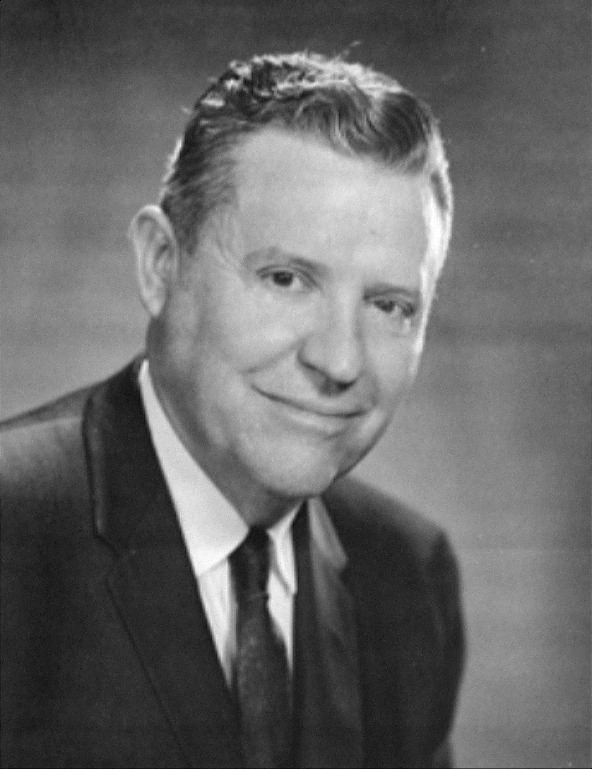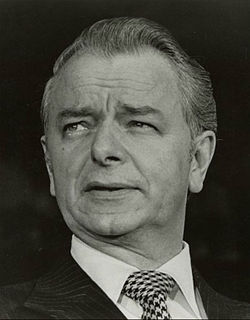
The governor of Texas heads the state government of Texas. The governor is the chief authority of the executive and legislative branch of the state government and is the commander in chief of the Texas Military. The current governor is Greg Abbott, who took office in 2015.

Ralph Webster Yarborough was an American politician and lawyer. He was a Texas Democratic politician who served in the United States Senate from 1957 to 1971 and was a leader of the progressive wing of his party. Along with Senate Majority Leader Lyndon B. Johnson and Speaker of the House Sam Rayburn, but unlike most Southern congressmen, Yarborough refused to support the 1956 Southern Manifesto, which called for resistance to the racial integration of schools and other public places. Yarborough voted in favor of the Civil Rights Acts of 1957, 1960, 1964, and 1968, as well as the 24th Amendment to the U.S. Constitution, the Voting Rights Act of 1965, and the confirmation of Thurgood Marshall to the U.S. Supreme Court. Yarborough was the only senator from a state that was part of the Confederacy to vote for all five bills.

Preston Earnest Smith was an American entrepreneur and politician who served as the 40th Governor of Texas from 1969 to 1973, who previously served as the lieutenant governor from 1963 to 1969.

Warren Eastman Hearnes was an American politician who served as the 46th governor of Missouri from 1965 to 1973. A member of the Democratic Party, he was the first officeholder eligible to serve two consecutive four-year terms.

The 1978 United States Senate elections in the middle of Democratic President Jimmy Carter's term. Thirteen seats changed hands between parties, resulting in a net gain of three seats for the Republicans. Democrats nevertheless retained a 58–41 majority.

United States gubernatorial elections were held on November 3, 1998, in 36 states and two territories. Going into the election 24 of the seats were held by Republicans, 11 by Democrats, and one by an Independent. The elections changed the national balance of power by the loss of one Republican and the gain of one Independent, although it shifted in nine states. Democrats gained open seats in California and Iowa and defeated incumbents Fob James of Alabama and David Beasley of South Carolina, while Republicans won open seats in Colorado, Florida, Nebraska, and Nevada and the Reform Party won an open Republican governorship in Minnesota. By the end of the election, 23 seats were held by Republicans, 11 by Democrats, one by the Reform Party, and one by an Independent.

United States gubernatorial elections were held on November 2, 2010, in 37 states and two territories. As in most midterm elections, the party controlling the White House lost ground. Democrats took five governorships from the Republicans, while Republicans took 11 governorships from the Democrats. An independent won one governorship previously held by a Republican, while a Republican won one governorship previously held by an independent. Republicans held a majority of governorships for the first time since before the 2006 elections. One state, Louisiana, had no election for governor, but it did feature a special election for lieutenant governor.
In the United States, a governor serves as the chief executive officer and commander-in-chief in each of the fifty states and in the five permanently inhabited territories, functioning as head of government therein. As such, governors are responsible for implementing state laws and overseeing the operation of the state executive branch. As state leaders, governors advance and pursue new and revised policies and programs using a variety of tools, among them executive orders, executive budgets, and legislative proposals and vetoes. Governors carry out their management and leadership responsibilities and objectives with the support and assistance of department and agency heads, many of whom they are empowered to appoint. A majority of governors have the authority to appoint state court judges as well, in most cases from a list of names submitted by a nominations committee.

United States gubernatorial elections were held on November 6, 1990, in 36 states and two territories. Most elected in these elections would serve for a 4-year term, while those in New Hampshire, Rhode Island, and Vermont would serve for a 2-year term.

United States gubernatorial elections were held on November 5, 1974, in 35 states and two territories. The Democrats achieved a net gain of four seats, Republicans took a net loss of five seats, and one Independent was elected to the governorship of a state. This election coincided with the Senate and the House elections.

United States gubernatorial elections were held on November 4, 2014, in 36 states and three territories, concurrent with other elections during the 2014 United States elections.

United States gubernatorial elections were held on 3 November 1970, in 35 states and two territories.

United States gubernatorial elections were held on 5 November 1968, in 21 states and one territory, concurrent with the House, Senate elections and presidential election. These were the last gubernatorial elections for Arizona, New Mexico, and Wisconsin to take place in a presidential election year, as all would extend their governors' terms from two to four years.

Claiborne Washington Smothers, I, known as Clay Smothers, was an American member of the Texas House of Representatives from the former District 33-G in Dallas County who served from 1977 to 1981. Though elected as a conservative Democrat, Smothers switched to Republican affiliation on December 17, 1979, near the end of the first year of the first administration of Bill Clements, first Republican governor of Texas since Reconstruction.

United States gubernatorial elections were held on November 8, 1966, in 35 states. 12 Democrats and 23 Republicans won election, bringing the partisan reflection of the nation's states to 25 Democrats and 25 Republicans. This election coincided with the Senate and the House elections.

United States gubernatorial elections were held on November 6, 2018, in 36 states and three territories. These elections formed part of the 2018 United States elections. Other coinciding elections were the 2018 United States Senate elections and the 2018 United States House of Representatives elections. The last regular gubernatorial elections for all but three of the states took place in 2014. Governors in New Hampshire and Vermont serve two-year terms, meaning that their most recent gubernatorial elections took place in 2016. Meanwhile, Oregon held a special election in 2016 to fill an unexpired term.
Democrat William Proxmire won a special election to fill the vacancy created by the death of Senator Joseph R. McCarthy (R-WI). Also, Price Daniel (D-TX) left the Senate to become governor of Texas, and Democrat Ralph Yarborough won a special election for that Senate seat. The Democrats thus made a net gain of one seat. However, Congress was out of session at the time of the Democratic gain in Wisconsin, and the Republicans gained a Democratic-held seat only weeks after the next session started, when Republican John D. Hoblitzell Jr. was appointed to fill the vacancy created by the death of Senator Matthew M. Neely (D-WV).















